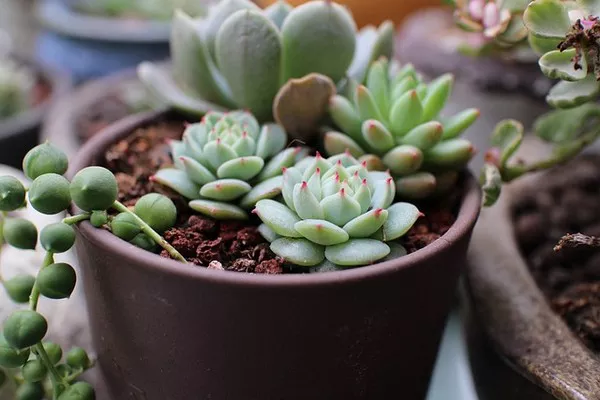Succulents have gained immense popularity in recent years due to their low maintenance requirements and unique aesthetic appeal. One of the most rewarding ways to expand your succulent collection is by propagating them from cuttings. Not only is this method cost-effective, but it also allows you to create new plants that are genetically identical to the parent plant. In this guide, we’ll explore the step-by-step process of growing succulents from cuttings, along with tips for success.
Understanding Succulent Propagation
Before delving into the specifics of growing succulents from cuttings, it’s essential to understand the basics of succulent propagation. Succulents are plants that store water in their leaves, stems, or roots, making them well-suited to dry environments. They have evolved various mechanisms for reproduction, including seed propagation, division, and leaf or stem cuttings.
When you propagate succulents from cuttings, you’re essentially cloning the parent plant. This method involves taking a portion of the plant, allowing it to develop roots, and eventually grow into a new plant. Unlike seed propagation, which introduces genetic variability, cuttings produce offspring that are genetically identical to the parent plant.
Selecting the Right Succulent Cuttings
The first step in growing succulents from cuttings is selecting healthy and suitable cuttings. Here are some tips to keep in mind:
1. Choose Healthy Plants: Select a healthy succulent with no signs of disease or pest infestation. Look for vibrant coloration, firm leaves, and compact growth.
2. Opt for Mature Stems: Choose stems that are mature and woody rather than young and tender. Mature stems have better nutrient reserves and are more likely to root successfully.
3. Use Sharp, Clean Tools: Use a clean, sharp knife or scissors to make a clean cut. Avoid tearing or damaging the stem, as this can hinder root formation.
4. Select Leaf Cuttings Carefully: If propagating succulents from leaf cuttings, choose plump, healthy leaves without any signs of damage or rot. Make sure the leaves are fully intact and not wilted.
Preparing Succulent Cuttings
Once you’ve selected suitable cuttings, it’s time to prepare them for propagation. Follow these steps to ensure success:
1. Allow Cuttings to Callus: Before planting, allow the cut end of the stem or leaf to callus over. This helps prevent rotting and promotes healthy root development. Place the cuttings in a dry, shaded area for a few days to allow the callus to form.
2. Choose a Suitable Growing Medium: Succulents prefer well-draining soil to prevent waterlogged conditions, which can lead to root rot. Use a specialized succulent or cactus mix, or create your own by combining potting soil with perlite or sand for improved drainage.
3. Plant Cuttings in the Growing Medium: Once the cuttings have calloused, plant them in the prepared growing medium. Insert the stem or leaf into the soil, ensuring that at least one node (where roots will form) is buried beneath the surface.
4. Water Sparingly: After planting, water the cuttings lightly to settle the soil around the roots. However, be cautious not to overwater, as succulent cuttings are prone to rot in soggy conditions. Allow the soil to dry out between waterings, and avoid watering excessively until roots have formed.
Caring for Succulent Cuttings
Proper care is crucial for the successful establishment of succulent cuttings. Here are some care tips to help your cuttings thrive:
1. Provide Adequate Light: Succulents require plenty of sunlight to thrive. Place your cuttings in a bright, sunny location, such as a south-facing window or under grow lights. However, avoid exposing them to direct sunlight for extended periods, as this can cause sunburn.
2. Monitor Watering: Succulent cuttings have delicate root systems and are sensitive to overwatering. Water sparingly, allowing the soil to dry out partially between waterings. A good rule of thumb is to water when the top inch of soil feels dry to the touch.
3. Avoid Cold Drafts: Succulents are sensitive to cold temperatures, especially during the rooting phase. Keep your cuttings away from cold drafts or sudden temperature fluctuations, as this can stress the plants and hinder growth.
4. Fertilize Sparingly: While succulents don’t require frequent fertilization, a diluted, balanced fertilizer can help promote healthy growth. Apply fertilizer sparingly during the growing season, following the manufacturer’s recommendations.
5. Monitor for Pests and Disease: Keep an eye out for signs of pests or disease, such as mealybugs, aphids, or fungal infections. If detected, take prompt action to address the issue using organic or chemical treatments as necessary.
Transplanting Succulent Cuttings
Once your succulent cuttings have developed a robust root system and established new growth, they can be transplanted into individual pots or incorporated into a larger arrangement. Follow these steps for successful transplanting:
1. Choose Appropriate Containers: Select containers with drainage holes to prevent waterlogging. Choose pots that are slightly larger than the root ball to allow for future growth.
2. Prepare the Soil: Use a well-draining succulent or cactus mix for transplanting. Ensure the soil is dry before transplanting to minimize root disturbance.
3. Carefully Remove Cuttings: Gently loosen the soil around the roots and carefully lift the cuttings from their original container. Be cautious not to damage the delicate roots during the process.
4. Plant Cuttings in New Containers: Place the cuttings in the center of the new container and fill in the gaps with fresh soil. Ensure the roots are covered and the plants are stable.
5. Water and Settle Soil: Water the newly transplanted succulents lightly to settle the soil around the roots. Allow the soil to dry out partially before watering again.
Conclusion
Growing succulents from cuttings is a rewarding and cost-effective way to expand your collection and propagate your favorite plants. By following the steps outlined in this guide and providing proper care and attention, you can successfully propagate succulents from cuttings and enjoy watching them grow into healthy, thriving plants. Whether you’re a seasoned gardener or a novice enthusiast, experimenting with succulent propagation can be a fun and educational experience that deepens your appreciation for these fascinating plants.


